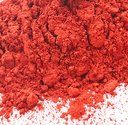working techniques
acrylic & pigment pictures
In my large-format acrylic paintings, I use various materials, such as paper, fibers, plaster or plastic modeling compounds, wood shavings, synthetic resins, wire, etc. Everything is applied in several layers, partly washed off again and then applied again. On this relief-like reason form structure and form, on which then ultimately the pigments are applied. The result is colored, luminous images with various layers and overlapping structures. Characteristic is the powdery, dull and depending on the light intensity intensive surface. In part, I use the pigments with modeling clay, sand and ash. I basically use high-quality, pure and tested non-toxic pigments as color bodies.
chalk & stone dusts
These haptic works are created through various blending techniques of chalk, wire, paper, sand from around the world, marble dust and other stone flours applied in multiple layers to give each work a haptic texture and a sense of depth. The grain and color of the sand and the stone flour give each picture an individual atmosphere. Depending on light and sunshine, shadows are created that move across the image and give life and dynamism to the work. I make the stone meal in the quarries of Carrara (marble flour) or by friendly sculptors, who provide me with their stone carvings that have fallen off when working on the sculptures.
slip & patina
The rust and patina plants are produced by various oxidation techniques with iron powder, iron filings, sand, copper particles, brass and bronze chips and various rust solutions.
enkaustik
It is one of the most varied forms of painting and can look back on a tradition of more than 3000 years. In some of my works also bleached beeswax acts as a carrier material of the pigments. By scraping, scratching, ruling, puncturing, etc. And a constant interplay of the application of numerous layers of wax and some scratching again, the encaustic offers a unique variety to the design of the image surface.
pigmentmaster
working techniques
acrylic & pigment works
Into my large-sized acrylic paintings, I use various materials, such as paper, fibers, gypsum or plastic modeling masses, wood shavings, synthetic resins, wire, etc. Everything is applied in several layers, partly washed off and then applied again. On this relief-like structure form will form, on which then ultimately the pigments are applied. Colored, luminous paintings with various layers and overlapping structures emerge. Characteristic is the powdery, dull and depending on the light intensity intensive surface. In part, I use the pigments with modeling mass, sand and ash. I basically use high-quality, pure and tested non-toxic pigments as color bodies.
chalk, marbledust & stone flours
These haptic white works are created through various blending techniques of chalk, marbledust, different stone flours, wire, paper, sand from around the world, applied in several layers to give each work a haptic texture and a sense of depth. The grain and color of the sand and the stone flour give each picture an individual atmosphere. Depending on light and sunshine, shadows arise and migrate across the artwork which breaths life and dynamic into the work. I bring the marble dust from the quarries of Carrara or by sculptors, who provide me with their stone carvings that have fallen off when working on the sculptures.
rust & patina
The rust and patina works are created by various oxidation techniques with iron powder, iron filings, sand, copper particles, brass and bronze chips and various rust solutions.
gold & encaustic
The golden works are characterized by different surface structures and patterns that give each work its haptic quality. With its warm shine, gold brings a pleasant light in every room and creates a very special atmosphere.
Enkaustic
is one of the most varied forms of painting and goes back to a 3000 year-old tradition. In some of my works bleached beeswax acts as a carrier material for the pigments and at the same time as a protection. By scraping, scratching, ruling, dotting, etc. the encaustic offers a singular variety to the creation of the painted surface.









